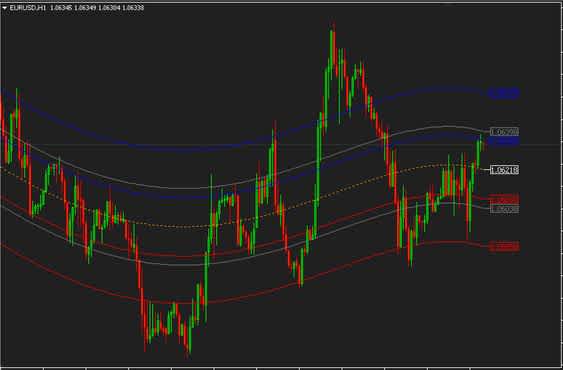What is Quantitative trading? Examples and strategies. [+FAQs]
Other
What is Quantitative trading?
Quantitative trading, also known as quant trading is a strategy which is based on quantitative analysis. These quantitative analysis is based on mathematical computations and number crunching to identify trading opportunities.
Quantitative trading is different from traditional trading where decisions are often based on fundamental analysis or intuition whereas quantitative trading involves the systematic use of data, statistical analysis, and algorithms to identify and execute trading opportunities.
In simple words, Quantitative trading is like bringing the brains of a computer to the stock market. Instead of relying on gut feelings or reading financial reports, it uses complex math, data analysis, and computer programs to decide when to buy or sell.
Understanding Quantitative trading with example
Imagine you're into sneakers, and you notice a trend – every time a certain sneaker brand releases a new model, its stock tends to go up. Now, instead of relying on your gut feeling, you decide to go quantitative. You collect tons of data on past sneaker releases, like the release date, how hyped they were, and how the stock behaved afterward.
Here's where the math magic comes in. You create a computer program that crunches all this data, looking for patterns and correlations. It figures out that when a sneaker drops on a Saturday, and the hype on social media is through the roof, the stock tends to pop on the following Monday. Bingo!
Now, armed with this quantitative strategy, you set your computer to automatically buy the sneaker company's stock on the Monday morning following a big Saturday release. You've essentially turned a sneaker trend into a stock market strategy. It's like having a data-driven crystal ball that helps you make strategic moves in the market based on patterns you've discovered.
Now, that you’ve understood what is quantitative trading let’s get to know some quantitative trading strategies.
Quantitative strategies
1. The Momentum trading
Suppose, you notice a hotshot tech stock that's been on a winning streak. The more it goes up, the more people want in. With a momentum strategy, you jump on the bandwagon. Your computer brain analyzes past trends and decides to buy when the stock is rising, hoping the trend continues. It's like catching a wave just as it starts getting huge.
2. The Mean Reversion
Now, imagine a stock that's been on a wild rollercoaster – up and down, up and down. A mean reversion strategy says, "Hey, it can't swing like this forever!" So, when the stock gets too high or too low based on its usual behavior, your computer whispers, "Time to make a move." It's like betting that after a wild party, things will eventually settle down.
3. Statistical Arbitrage
Think of this as being a detective in the market. Your computer analyzes related assets, like two stocks that usually move together. But suddenly, one takes an unexpected turn. A statistical arbitrage strategy spots these divergences and says, "Hmm, time to buy the underdog and sell the overachiever." It's like spotting when Batman's sidekick starts getting more attention than Batman himself.
4. Volatility
Markets can be moody – calm one moment, chaotic the next. A volatility strategy thrives on these mood swings. When things get too wild, it suggests selling options to others who are willing to pay a premium for protection. It's like being the calm in the storm, collecting a fee for offering a bit of financial shelter.
Most asked questions on Quantitative trading
1. What types of data do quantitative traders use?
Quantitative traders use various types of data, including historical price data, trading volumes, economic indicators, and other relevant financial metrics. The goal is to identify patterns and relationships that can inform trading strategies.
2. Can anyone engage in quantitative trading, or is it only for professionals?
While quantitative trading often involves sophisticated mathematical models, anyone with a strong background in mathematics, programming, and finance can potentially engage in it. However, it does require a deep understanding of markets and risk management.
3. How do quantitative traders develop their trading algorithms?
Quantitative traders develop algorithms by combining mathematical models with historical data. They backtest these algorithms to assess their performance against past market conditions. Continuous refinement and adaptation are crucial for successful algorithmic trading.
4. What are common risks associated with quantitative trading?
Risks in quantitative trading include model inaccuracies, data errors, and unexpected market events. Additionally, overreliance on historical data may lead to strategies that perform poorly in changing market conditions.
5. Is quantitative trading only for high-frequency trading (HFT)?
While some quantitative trading strategies, like HFT, involve making high-speed trades, not all quant trading is HFT. Quantitative strategies can have various holding periods, ranging from very short-term to longer-term investments.
6. How does risk management work in quantitative trading?
Quantitative traders employ risk management strategies to control potential losses. This may involve setting stop-loss orders, position sizing, and monitoring portfolio diversification to mitigate risks associated with individual trades or market volatility.
7. Can quantitative trading be applied to different asset classes?
Yes, quantitative trading can be applied to various asset classes, including stocks, bonds, commodities, and currencies. The principles of quantitative trading remain similar across different markets.
8. What are the advantages of quantitative trading? - Advantages include the ability to process large amounts of data quickly, execute trades with precision, and remain disciplined in following predefined strategies. Quantitative trading can remove emotional biases often associated with human trading.



